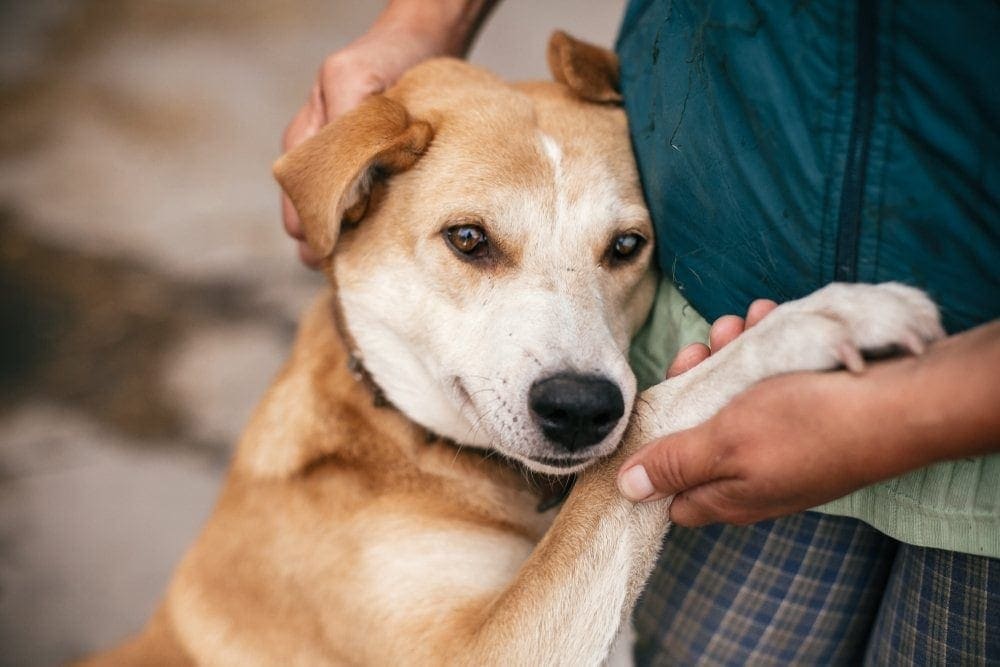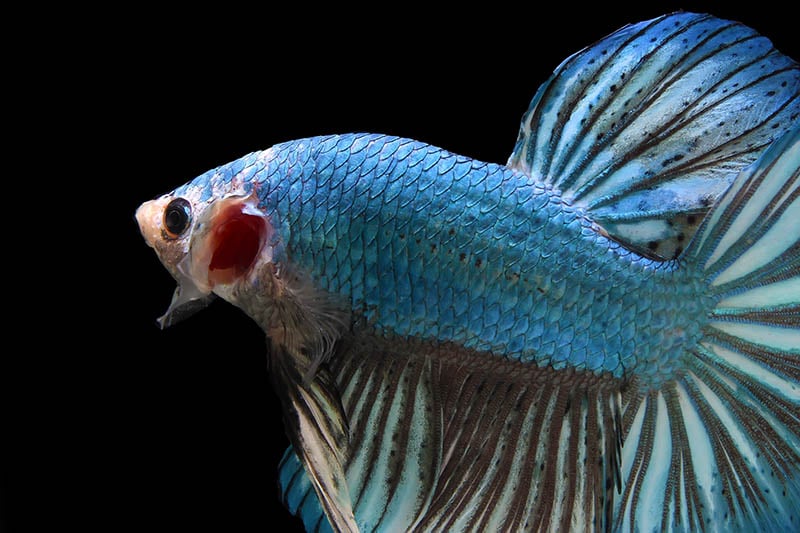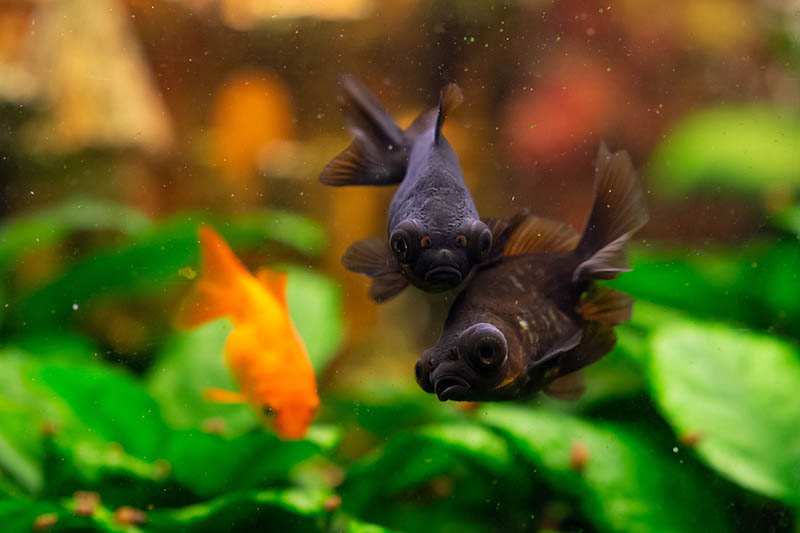Vizsla vs Labrador: The Key Differences (With Pictures)
Updated on
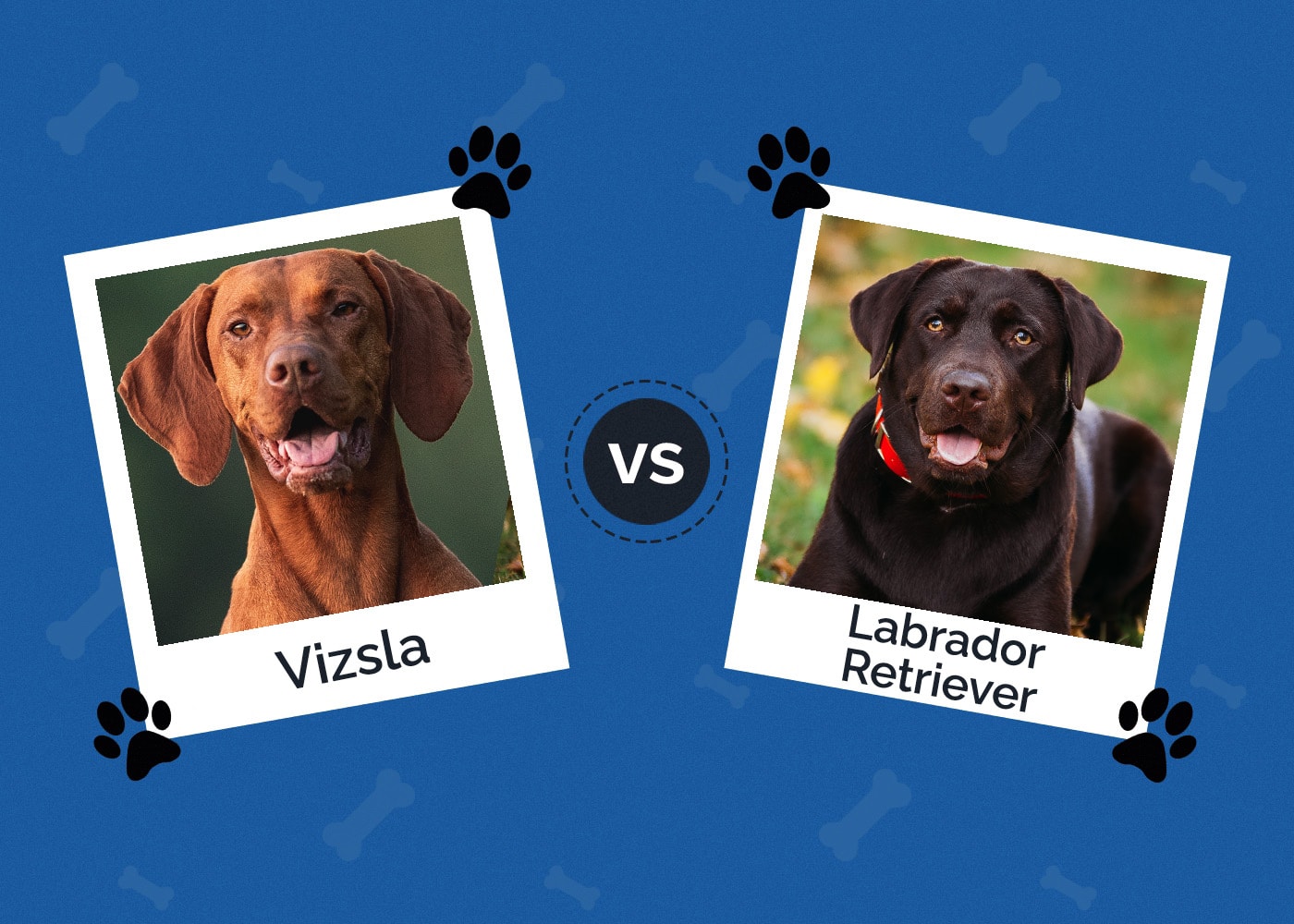
The widely beloved Labrador Retriever and the more niche hunting Vizsla are both strong candidates for many modern households, but they vary a lot across characteristics and temperaments. Let’s check out some more detailed information about the Labrador and Vizsla so you can get a better idea of which breed might be right for your home.
Visual Differences
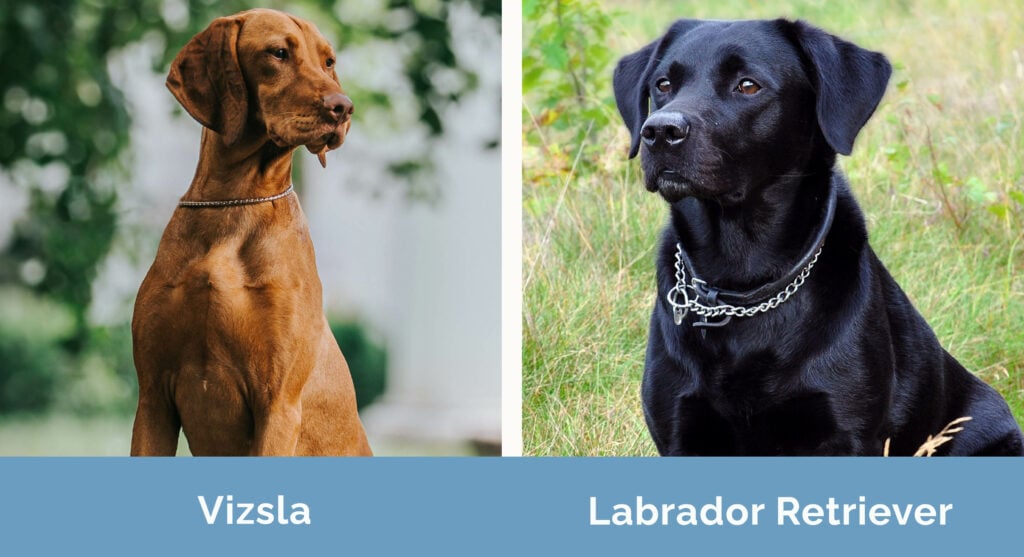
At a Glance
- Average height (adult): 20–24 inches
- Average weight (adult): 45–65 pounds
- Lifespan: 10–14 years
- Exercise: 2+ hours a day
- Grooming needs: Moderate
- Family-friendly: Yes
- Other pet-friendly: Sometimes
- Trainability: Friendly with family but aloof with strangers, intelligent, high-energy, stubborn
- Average height (adult): 21–24 inches
- Average weight (adult): 55–80 pounds
- Lifespan: 10–12 years
- Exercise: 5+ hours a day
- Grooming needs: Moderate
- Family-friendly: Yes
- Other pet-friendly: Mostly
- Trainability: Earnest, friendly, lovable, trainable
Vizsla Overview
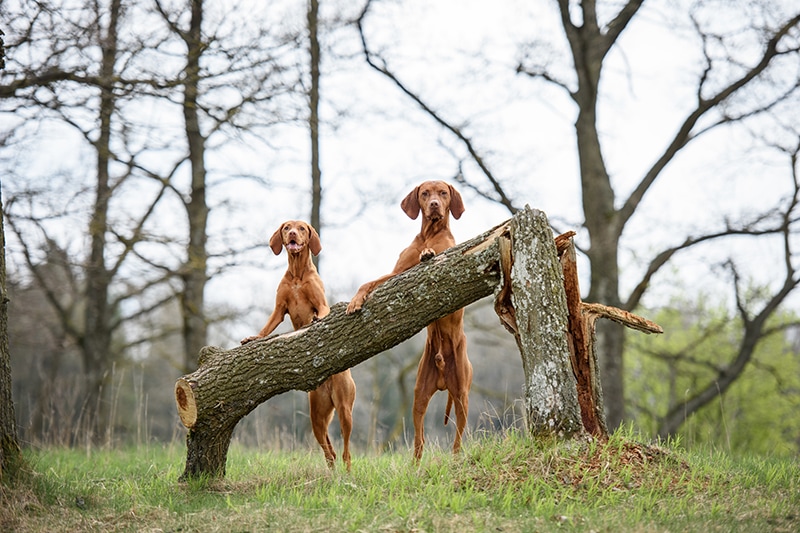
Vizslas are smooth-haired hunting dogs with history: they were originally bred for Hungarian royalty centuries ago. Today, Vizslas are energetic, protective, and friendly dogs known for intelligence and a stubborn streak. They’re also less of a hassle to groom than Labs, with a nice, smooth coat. They have great noses and are sometimes used as bomb-sniffing dogs, but the Vizsla lacks the Labrador’s brand recognition, so to speak.
Grooming
Vizslas have short, smooth fur that sheds a bit at all times throughout the year. That means regular brushing is needed, but thankfully, they don’t need many baths. The Vizsla’s coat doesn’t hold much dirt and sheds water easily, so they stay fairly clean even when they’re getting superficially dirty.
Heritage
The modern-day Vizslas are descended from a royal breed of Hungarian dog, which was, in turn, descended from hounds domesticated by the native Magyar tribes. The Hungarian nobles carefully protected the bloodline by breeding only a select few of them, which almost led to the breed’s extinction after a rash of wars ending after WWII.
Health Problems
Maybe one day we can eliminate these, but for now, Vizslas have their own unique set of commonly occurring health problems. Let’s check those out a bit below so you can know what to expect.
- Von Willebrand’s Disease: A bleeding disorder common in Vizslas, this needs to be screened for because there are few outward symptoms except excessive bleeding. Naturally, that would be a bad and late time to find out.
- Hyperthyroidism: Caused by an underperforming thyroid, this can mess with your dog’s metabolism, including appetite and energy levels.
- Progressive Retinal Atrophy: Just like Labs, Vizslas may develop this ocular condition, which eventually causes cataracts and blindness.
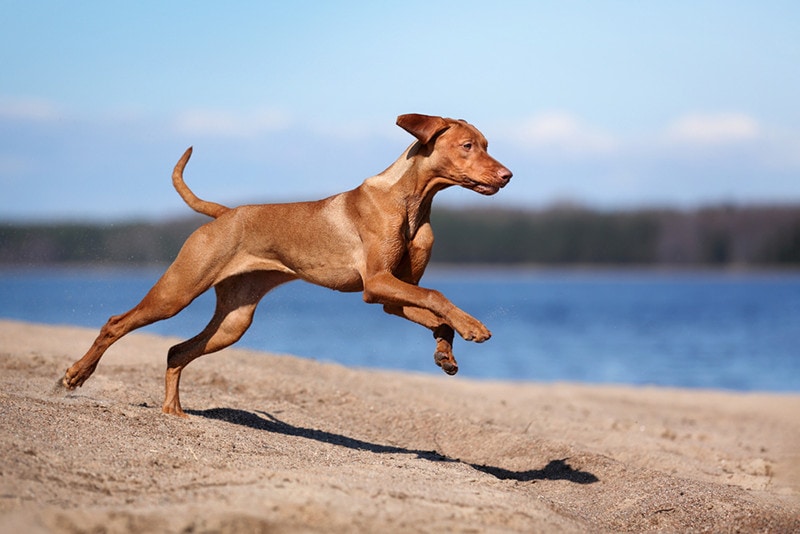
Suitable for:
Vizslas are a great choice for many households but need you to match their high energy levels. If you like to bike, hike, run, or do other exercises, your Vizsla would love to do it with you. After all, they were royal hunting dogs, not couch potatoes!
Vizslas are also more attached to their people than other dogs, acting more aloof with strangers. They warm up fast with proper socialization, so don’t worry. While very smart, Vizslas have a mind of their own and will sometimes disobey if they feel like it’s worth it to do so.
Labrador Retriever Overview
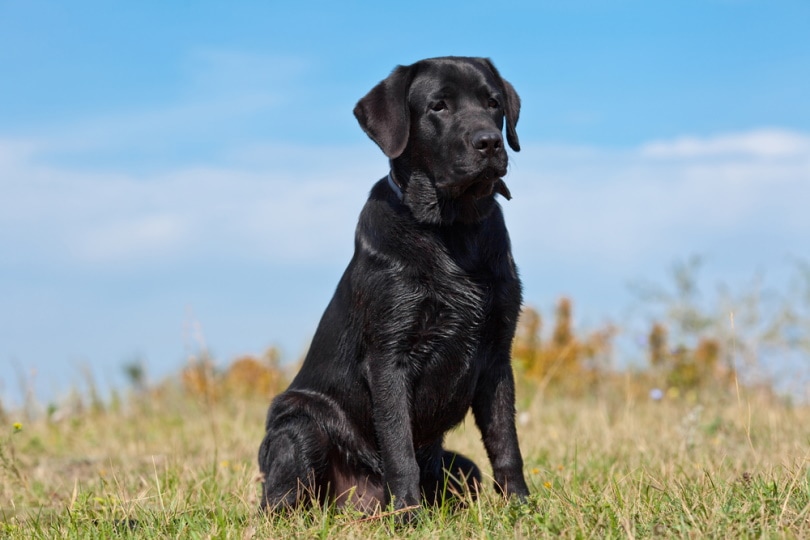
Labrador Retrievers trace back to 18th century Canada, but today, they’re one of the most popular dogs in the world. From luscious chocolate to brilliant golden coats, Labs come in all colors and personalities. Nearly all of them are friendly, hyper dogs, but they’re very loyal too. Labs love a good game of fetch and don’t mind running around for hours, but a few of them might love being couch dogs, too.
Grooming
Labs have a big shed twice a year, and their hair comes out in handfuls. During shedding seasons, Labs need to be washed and brushed daily to remove loose hair. That makes them a bit more high maintenance than other dog breeds. With all that said, some Labs are short-haired and don’t shed as much. However, you should still expect to find hair in your home throughout the year.
Heritage
Labradors aren’t ancient dogs but they’re fairly old and can be traced back to the late 1700s and early 1800s when they worked as fishing dogs. Labs were typically used as hunting retriever dogs after this because they’re intelligent, trainable, and most importantly, love playing fetch.
Health Problems
Labs, like all dogs, are more prone to certain detrimental health conditions than others. They’re not any more unhealthy than the average large breed, but you’ll still have to watch out for a few health concerns.
- Hip & Elbow Dysplasia: Common with all big dogs, dysplasia is a joint deformity that develops when a Lab is young.
- Bloat & Obesity: Labs love food, so bloat and obesity are typically caused by eating too quickly, eating too much food, and a lack of exercise.
- Hyperthyroidism: Especially common in Labs, this condition can cause fatigue, sudden weight gain, and even skin lesions.

Suitable for:
Labs are a popular breed for a reason: they suit nearly any individual or family lifestyle as long as you can wear them out enough! Once they get enough exercise for the day, they’ll want to snuggle up as close as possible to their favorite people. Labrador Retrievers are big dogs with big hearts, and they’re less wary of strangers than breeds like the Vizsla.
Which Breed Is Right for You?
Labrador Retrievers and Vizslas are both smart, loyal, high-energy dogs, but Labs are definitely more family-friendly. Vizslas can take some socializing to warm up, while Labs are gentler and more welcoming to strangers. Carefully consider everything there is to know about each breed before making a final decision.
Featured Image Credit: (L) Liudmila Bohush, Shutterstock | (R) Ajtai Krisztina, Shutterstock







